1. The Russian-American Space Handshake

The Cold War, an ideological battle that played out across the globe from the mid-1940s to the early 1990s, was far more than just a standoff between superpowers. Beneath the surface of missiles and high-stakes diplomacy, the era was filled with astonishingly strange plots, close calls, and moments of sheer human oddity.
Perhaps the most hopeful and strange moment of the Cold War was the Apollo–Soyuz Test Project in July 1975. After years of intense, often hostile competition in the Space Race, American and Soviet spacecraft rendezvoused and docked in Earth orbit. Astronaut Thomas Stafford and Cosmonaut Alexei Leonov shared the world’s most famous handshake through the hatchway connecting their two vessels. This act, broadcast live around the world, symbolized a momentary thaw and a spirit of collaboration, proving that even bitter rivals could put aside their differences to achieve something monumental.
2. Operation Gold’s Pre-Spoiled Tunnel
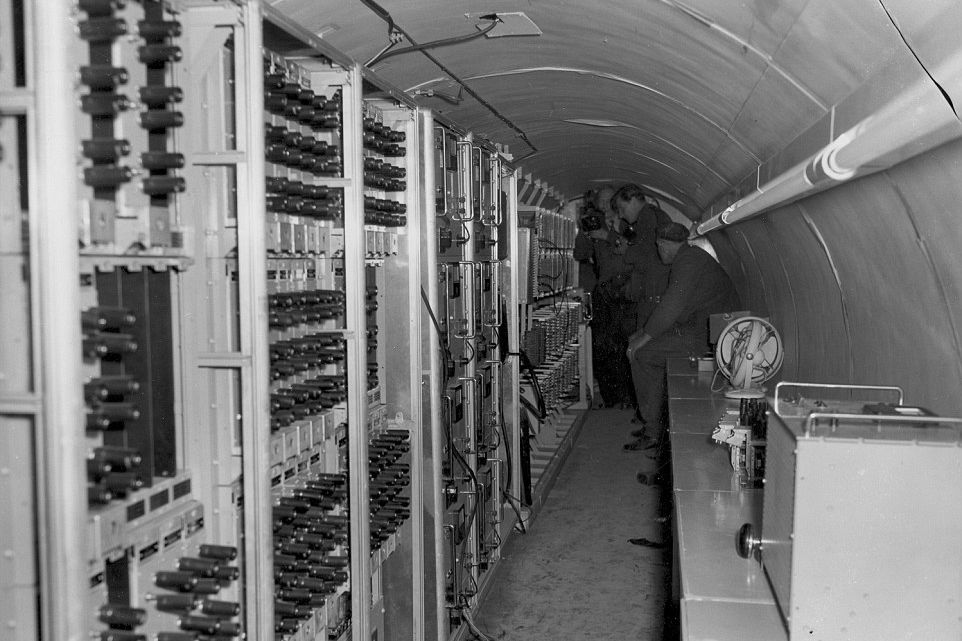
In the mid-1950s, the CIA and Britain’s MI6 collaborated on “Operation Gold,” an ambitious plan to construct a 1,476-foot tunnel beneath the border between the American and Soviet sectors of Berlin to tap into Soviet army communication lines. The project successfully intercepted thousands of hours of crucial military intelligence for a year and a half. However, the Soviets knew about the tunnel from the beginning. A highly placed double agent inside MI6, George Blake, had alerted the KGB before construction even started. Moscow deliberately allowed the operation to continue for a year and a half to protect their invaluable mole, only “discovering” the tunnel in 1956 and publicly exposing it as a brilliant propaganda victory.
3. The Cuban Cigar Plot
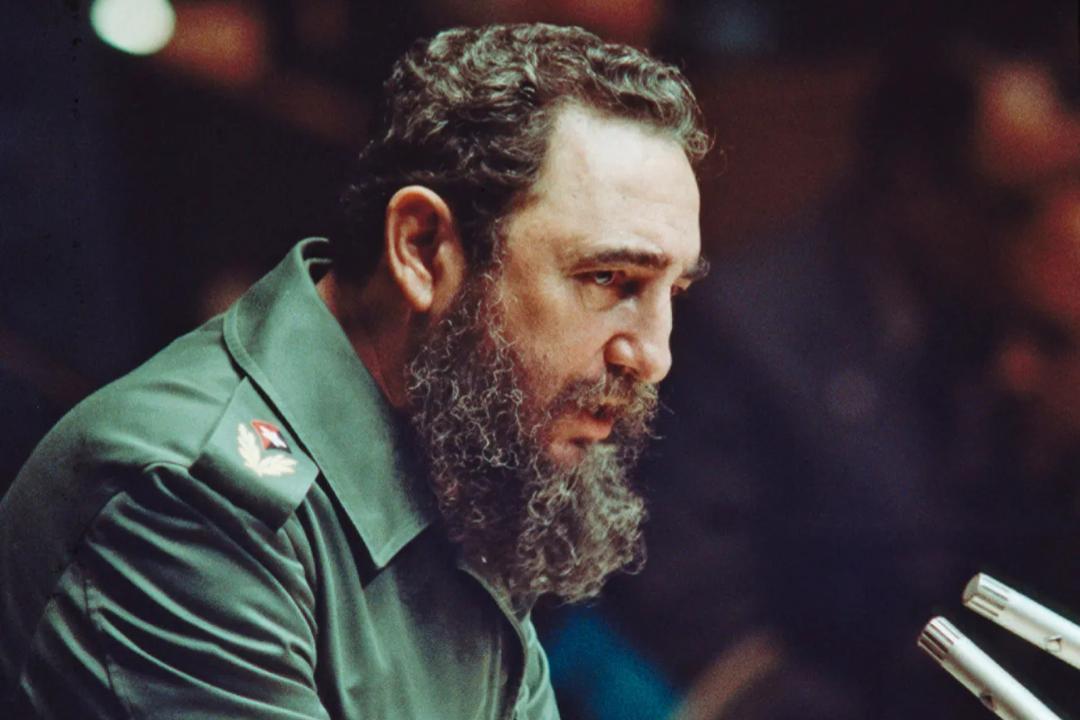
The CIA, desperate to assassinate or discredit Cuban leader Fidel Castro, concocted a long list of bizarre plots, including one particularly strange attempt involving an explosive cigar. Recognizing Castro’s fondness for cigars, the agency considered various ways to use them against him. One idea was to coat them with a potent poison that would be absorbed into his mouth; another, more dramatic idea, involved rigging a cigar to explode. Though ultimately never carried out, the sheer extent of the schemes, which included plots to dust his shoes with thallium salt to make his beard fall out, highlights the almost cartoonish lengths to which spy agencies went during the conflict.
4. The Nuclear Bomb Lost in North Carolina
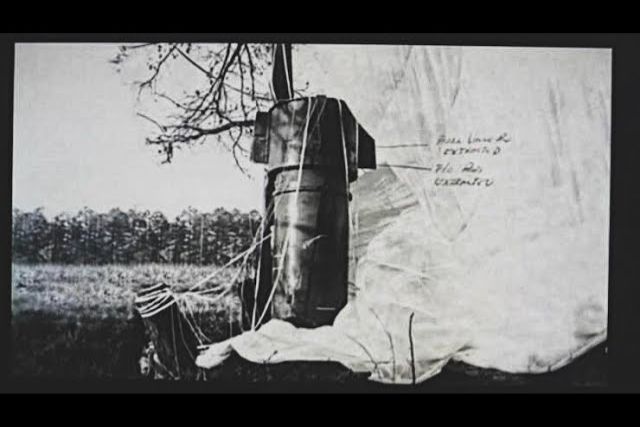
In 1961, a U.S. Air Force B-52 bomber carrying two Mark 39 thermonuclear bombs broke up in mid-air over Goldsboro, North Carolina. Five of the eight crewmen parachuted to safety, but the two bombs fell to earth. One parachute deployed, allowing the bomb to land relatively gently. The other bomb’s parachute failed. Upon impact, five of the six safety mechanisms on the non-parachuted bomb failed, leaving just one single low-voltage switch preventing a nuclear detonation. The tail section of the bomb was recovered, but the highly radioactive core of the bomb was never completely recovered from the marshy farmland and remains buried there to this day, with the Air Force purchasing the necessary easement rights.
5. Operation Able Archer’s Near-Miss
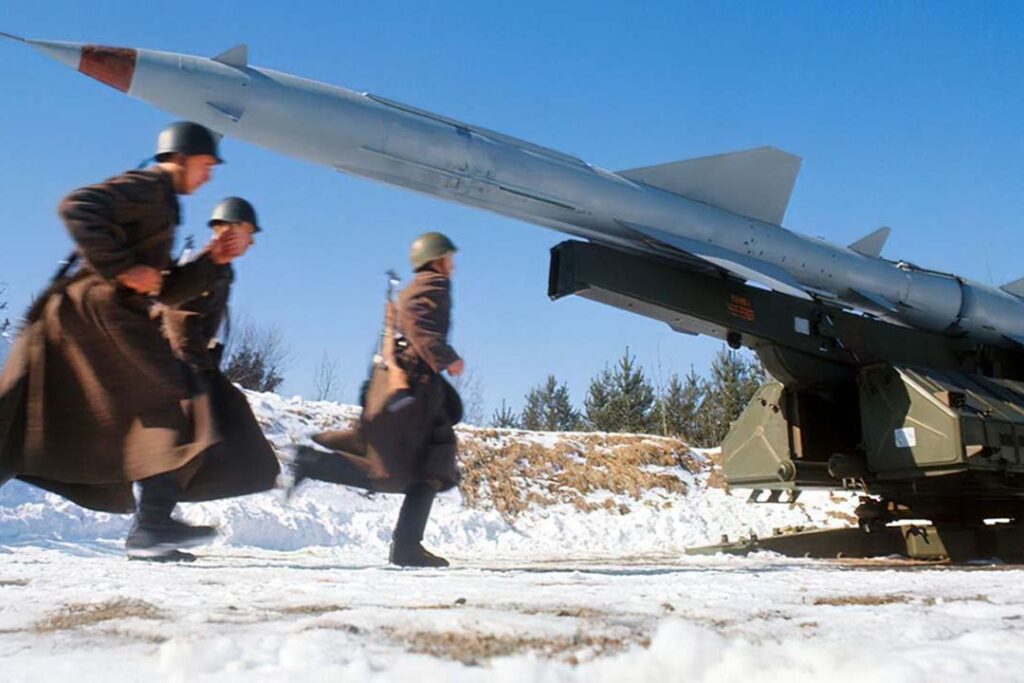
In November 1983, NATO conducted a massive, realistic command post exercise called “Able Archer 83,” which simulated a period of conflict escalation leading up to a coordinated nuclear attack. The exercise involved high-level participation from heads of government, realistic communication formats, and even code words. However, Soviet intelligence interpreted the drills as a cover for an actual first strike. Moscow had a genuine fear that NATO might use a large exercise to launch a surprise attack, and the Soviet military prepared its nuclear forces for a counter-strike, placing the world dangerously close to an accidental nuclear war based on a catastrophic misunderstanding.
6. The Rectal Escape Kit

Spy agencies on both sides of the Iron Curtain developed increasingly bizarre gadgets, and one of the most unusual was the CIA’s “Rectal Escape Kit.” Designed for agents who might be captured and subjected to cavity searches, this cylindrical kit was small enough to be concealed internally. It contained items crucial for a desperate escape, such as tiny saws, drill bits, and a miniature map, allowing a captured operative a last-ditch attempt at survival and evasion. The existence of such a specialized kit underscores the extreme paranoia and comprehensive preparation that characterized the intelligence war.
7. Project Iceworm’s City Under the Ice
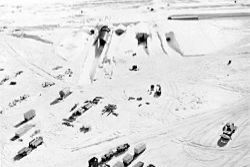
In 1960, the U.S. Army began a top-secret project in Greenland called “Camp Century,” publicly described as an Arctic research station. In reality, it was a massive experimental underground base dug beneath the ice sheet, designed to secretly house up to 600 nuclear missiles that could be moved around and launched toward the Soviet Union. The network of tunnels was powered by a small nuclear reactor. The ambitious plan was ultimately abandoned in 1966 when the U.S. realized that the ice sheet was not stable enough; the glacier’s movement would have crushed the tunnels, making the missile concept impossible. The site was left behind, along with its waste.
8. The Ghost of the Tsar Bomba
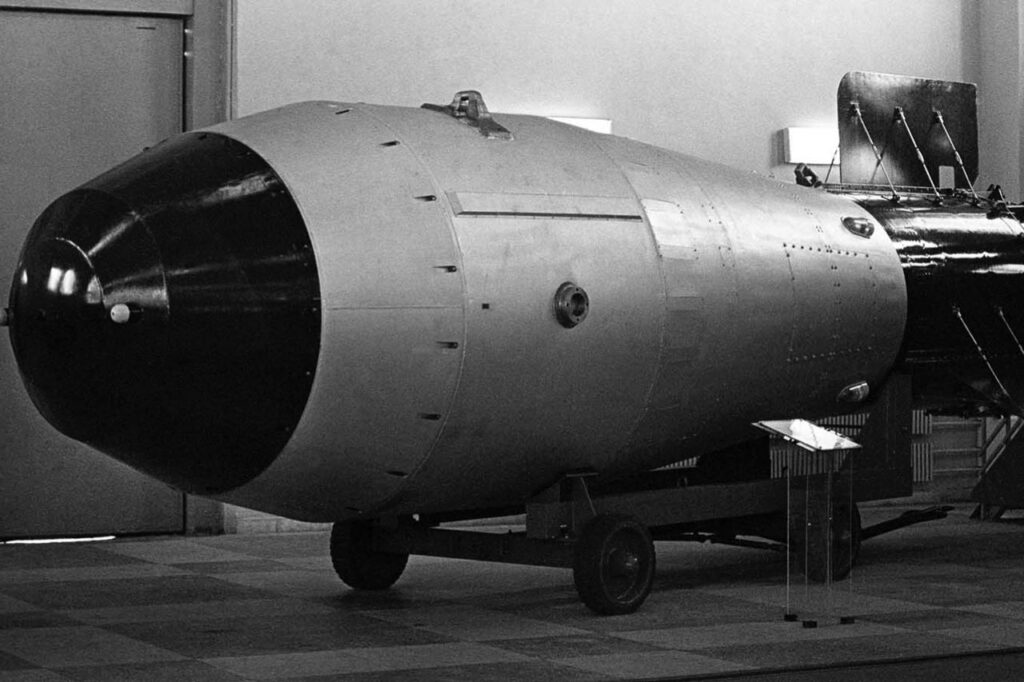
The Soviet Union detonated the largest nuclear device ever created in 1961, a hydrogen bomb known as “Tsar Bomba.” This single weapon released an estimated energy yield of 50 megatons of TNT, making it over 3,000 times more powerful than the bomb dropped on Hiroshima. The shockwave traveled around the Earth three times, and the mushroom cloud reached an incredible height of 40 miles, nearly seven times the height of Mount Everest. The detonation was a clear statement of Soviet technological prowess, but also demonstrated a terrifying capacity for destruction, representing the pinnacle of the nuclear arms race.
9. The Cold War Deer Boundary

An unexpected biological consequence of the Iron Curtain was observed in the deer populations along the former border between East and West Germany. During the Cold War, a highly secured, heavily-fenced, and mined “death strip” ran between the two nations, which prevented all movement, including that of wildlife. Decades after the barrier was removed, researchers discovered that local deer populations still largely refuse to cross the invisible line of the former border. This ingrained behavior, passed down through generations who learned to avoid the dangerous strip, offers a strange testament to the deep, lasting impact of the Cold War on the natural world.
10. The CIA’s Acoustic Kitty

One of the CIA’s most notorious and expensive failures was “Acoustic Kitty,” a bizarre attempt in the 1960s to use house cats as mobile surveillance platforms. The project involved surgically implanting a microphone in a cat’s ear canal, a small radio transmitter at the base of its skull, and a battery pack within its chest. The idea was to train the cat to sit near foreign officials and eavesdrop on their conversations. According to declassified documents, the first operational test was a disaster: the cat, released near its target in a Washington, D.C. park, immediately wandered into the street and was struck and killed by a taxi, ending the $15 million project.
11. Project MK-ULTRA’s Mind Control

Project MK-ULTRA was a secret and illegal CIA program, active from the early 1950s through the late 1960s, that focused on mind control, interrogation techniques, and behavior modification. The program involved numerous experiments on human subjects, often without their knowledge or consent, where researchers administered high doses of psychoactive drugs, especially LSD, and conducted forms of psychological torture. The project was born from a fear that the Soviets and Chinese had developed mind control technologies and, in its extreme and unethical methods, remains one of the darkest and most morally questionable intelligence programs of the era.
12. The Day an Ex-Soviet Officer Saved the World

On September 26, 1983, Stanislav Petrov, a lieutenant colonel in the Soviet Air Defence Forces, was on duty at the secret command center outside Moscow when the satellite early-warning system reported that the US had launched multiple intercontinental ballistic missiles toward the USSR. Petrov’s military protocol demanded that he report the launch up the chain of command, which would have triggered a retaliatory strike. However, relying on his training and an instinct that a full-scale attack would involve hundreds of missiles, not just five, he correctly assessed the report as a system malfunction, a false alarm, and delayed reporting it. His single, rational decision prevented a nuclear exchange.
13. The Diplomatic Tank Standoff
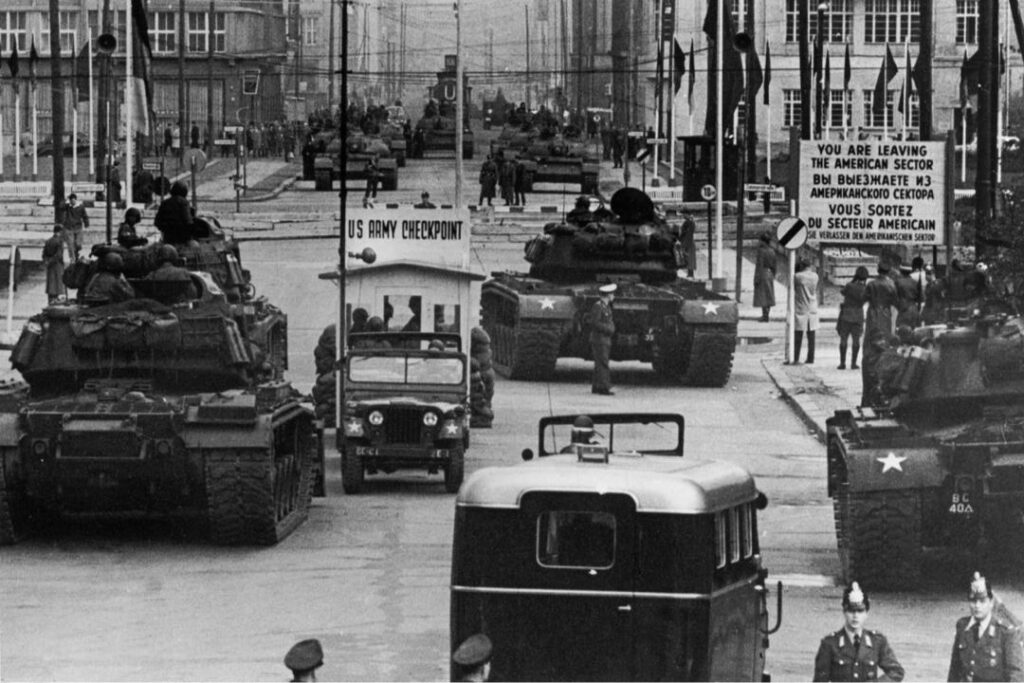
During the height of the Cuban Missile Crisis in October 1962, a low-profile but extremely tense confrontation occurred at Checkpoint Charlie, the most famous crossing point between East and West Berlin. U.S. and Soviet tanks were sent to the checkpoint, lining up a mere 100 yards apart, with their main guns pointed directly at each other. The standoff lasted for 16 hours. The close proximity of the opposing forces created a palpable sense of danger that lasted through the entire night, with a single wrong move threatening to ignite the conflict in a key European hotspot.
14. The Exploding Siberian Pipeline
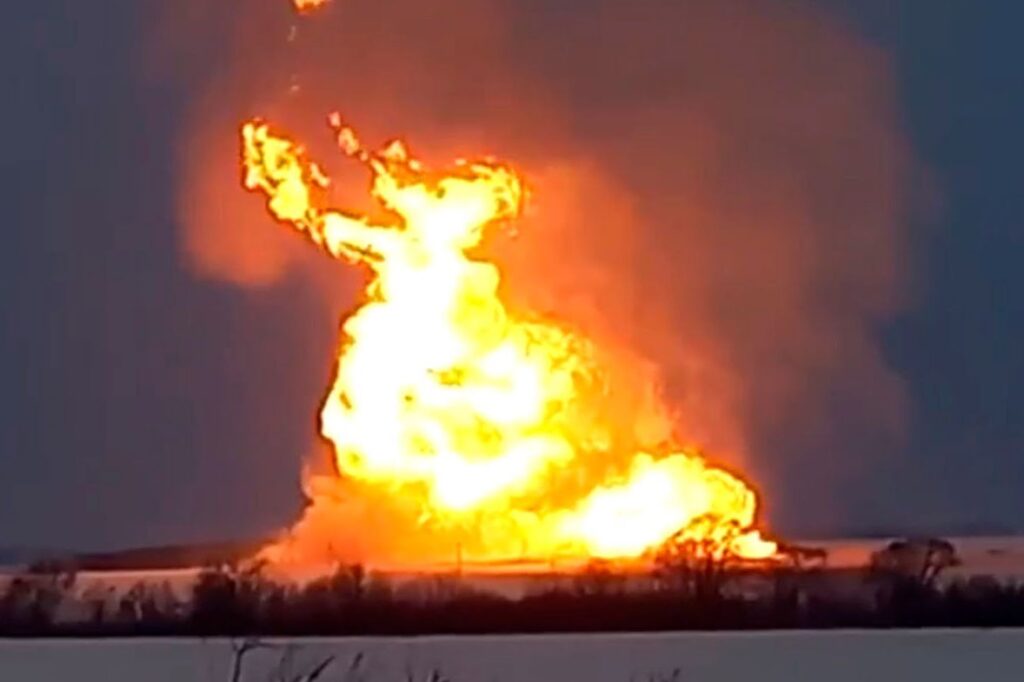
In the early 1980s, the Soviet Union attempted to steal sophisticated computer software from a Canadian company that was necessary for managing the Trans-Siberian gas pipeline. Unbeknownst to the KGB, the CIA, aware of the theft attempt, deliberately fed them a modified version of the software that contained a “Trojan horse” virus. The malicious code allowed the system to operate normally for a year, but then introduced small timing errors that eventually caused massive overpressures in the pipeline. The resulting explosion was massive, with one U.S. official later describing it as “the most monumental non-nuclear explosion and fire ever seen from space.”
15. The Secret Tunnels of the White House
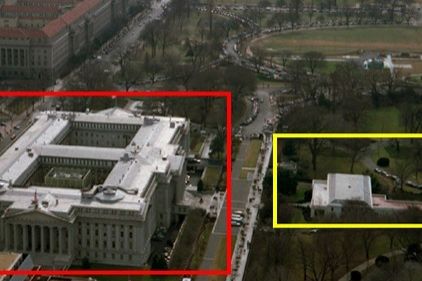
The American intelligence community considered the Soviet embassy in Washington, D.C., a massive surveillance threat, and in response, the U.S. government planned and executed “Operation Monopoly.” This complex and long-running project involved the meticulous construction of a vast network of listening tunnels and chambers beneath the embassy property, a process that took place largely beneath the noses of Soviet agents. The goal was to gain continuous access to the communications and confidential conversations within the highly fortified building, illustrating the extensive subterranean battle waged in the capital city.
16. Project A119: Nuking the Moon

In the late 1950s, the U.S. Air Force, motivated by the ongoing Space Race with the Soviet Union, launched a top-secret study known as Project A119, or “A Study of Lunar Research Flights.” The truly outlandish goal was to detonate a nuclear warhead on the surface of the Moon. The plan was not for any scientific reason, but purely to create a visible, spectacular, and politically stunning demonstration of U.S. military capability and superiority to boost national morale and intimidate the Soviet Union. The project was eventually canceled due to concerns about the resulting radioactive fallout and the potential militarization of space.
17. The Secret Police’s Odor Jars

The East German secret police, or Stasi, developed one of the most uniquely invasive and paranoid methods of surveillance: collecting and storing the scent of suspected dissidents. When a suspect was interrogated or held, agents would covertly use pieces of cloth to swab their chair seats or even command the person to hold a jar containing a strip of cloth. These “odor samples” were sealed in jars and stored in a vast, clandestine library, intended to be used by police dogs for tracking and identification should the suspect ever need to be hunted down.
18. The Sputnik-Shocked US Education System

When the Soviet Union successfully launched Sputnik, the world’s first artificial satellite, into orbit in 1957, the U.S. public and government experienced a state of collective shock known as the “Sputnik Crisis.” The event was interpreted as a sign that the U.S. had fallen behind the USSR in technological and scientific capability. The reaction led directly to the creation of NASA and, more strangely, the massive reform of American science and math education, as the government invested heavily in school programs to produce more scientists and engineers in what was essentially a pedagogical arms race.
19. The Case of the Defecting East German Policeman
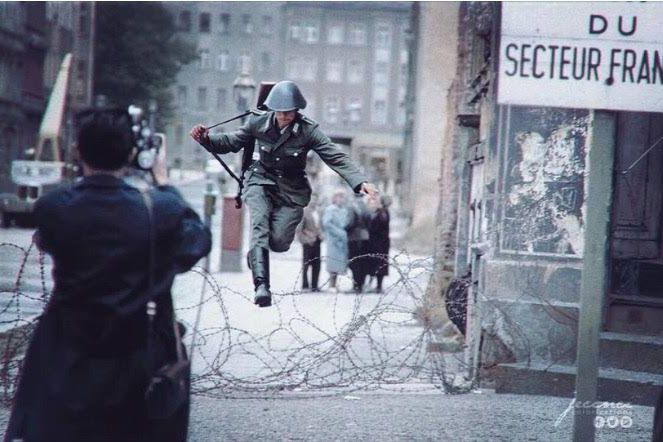
On August 15, 1961, just days after construction began on the Berlin Wall, a young East German border guard named Conrad Schumann became a defining image of the Cold War. Positioned to guard a section that was still only barbed wire, Schumann was pressured by West German citizens shouting at him to jump. A West German police car waited nearby. With a determined dash, Schumann leapt over the barbed wire, dropping his rifle, and became one of the first and most famous people to defect to the West, a moment captured in an iconic photograph that symbolized the desperation to flee.
20. The Tale of the Teenage Kremlin Pilot
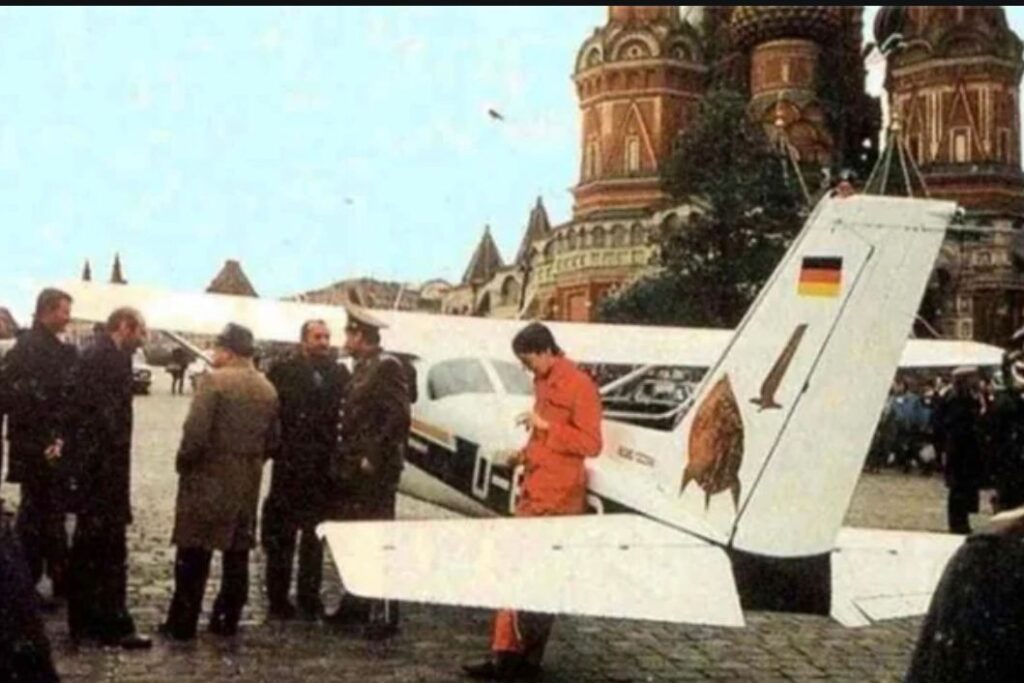
In 1987, a 19-year-old West German named Mathias Rust pulled off one of the most audacious stunts of the Cold War by piloting his small Cessna 172 light aircraft right through Soviet air defense systems and landing near Red Square in Moscow. Rust took off from Finland, flew hundreds of miles undetected through highly restricted Soviet airspace, and only landed after circling the Kremlin, eventually touching down on a bridge near St. Basil’s Cathedral. Russian interceptors did spot him several times, but confusing protocol and the mistaken assumption that he was a friendly training aircraft or a distress signal meant no one stopped the amateur pilot. The highly public security breach was a massive embarrassment for the Soviet military, leading to the dismissal of the Minister of Defense and the head of the Air Defense Forces.
These stories remind us that even in the most serious times, human ingenuity, and sometimes sheer recklessness, can lead to unforgettable, strange, and often hopeful outcomes.
Like this story? Add your thoughts in the comments, thank you.
This story The Cold War’s Strangest Moments was first published on Daily FETCH


